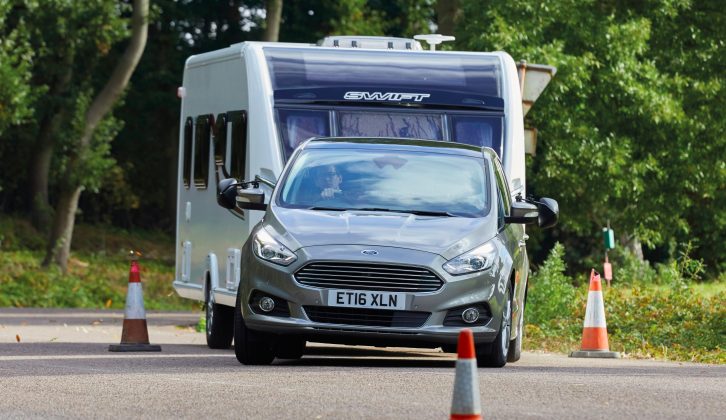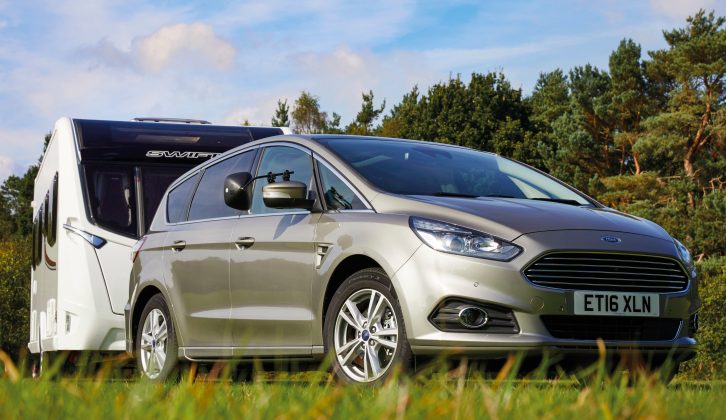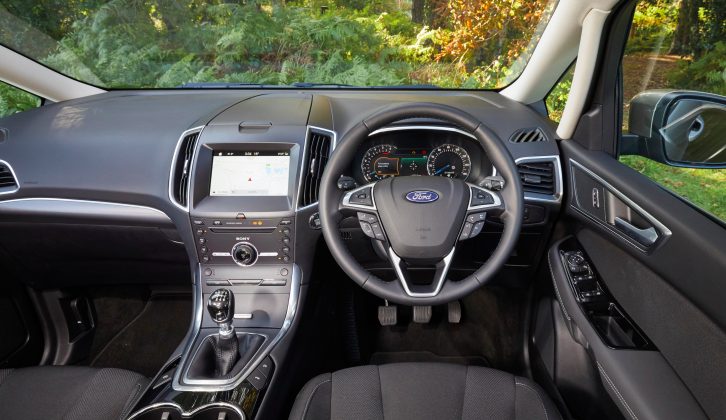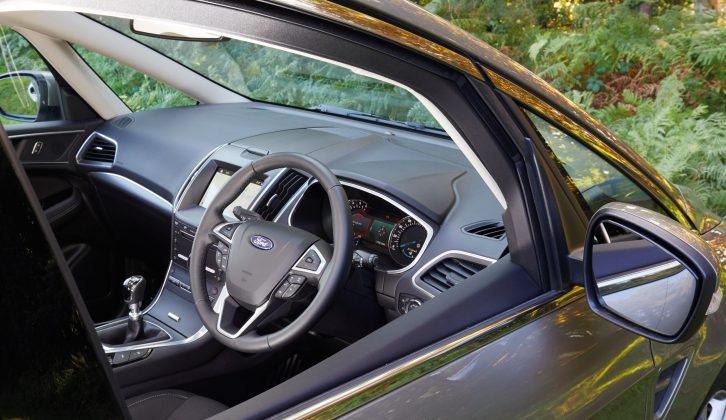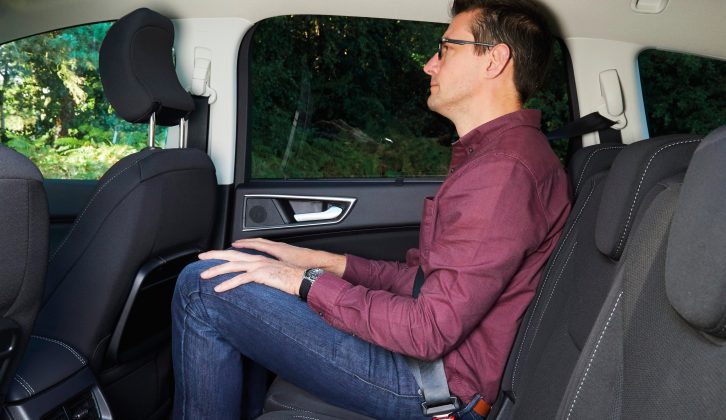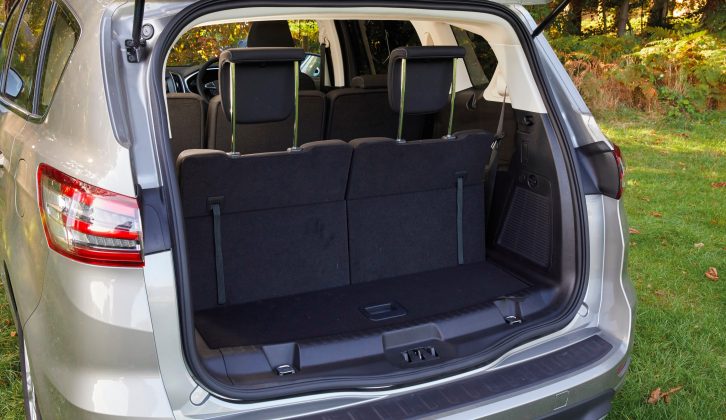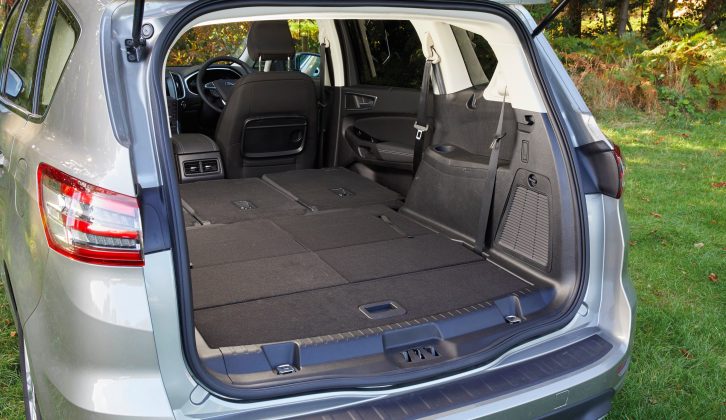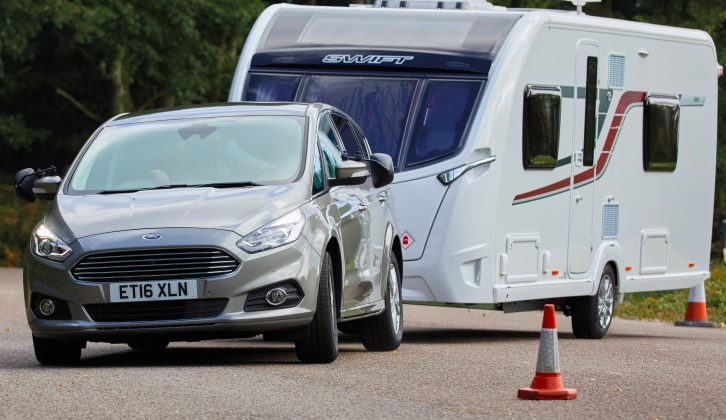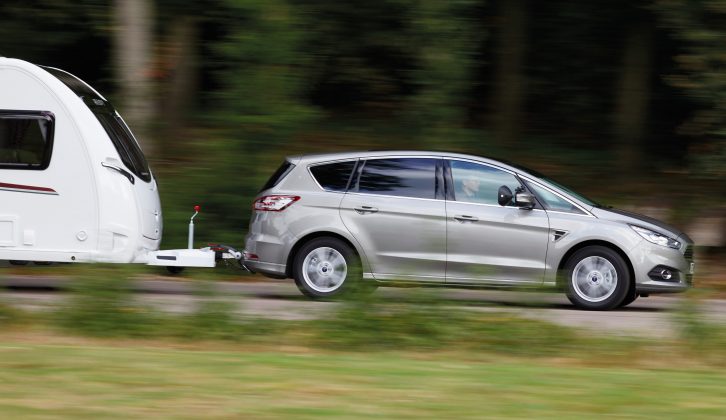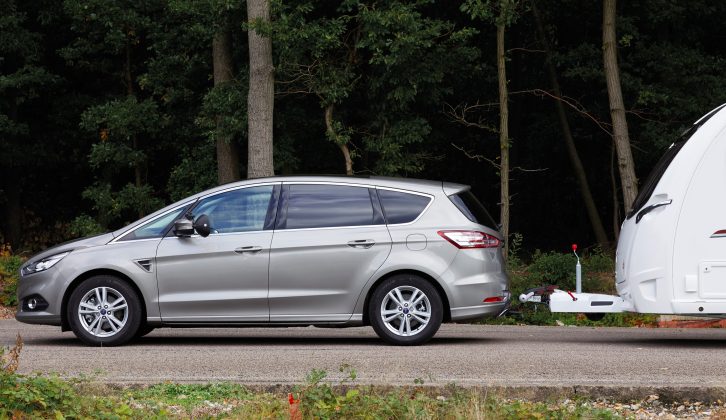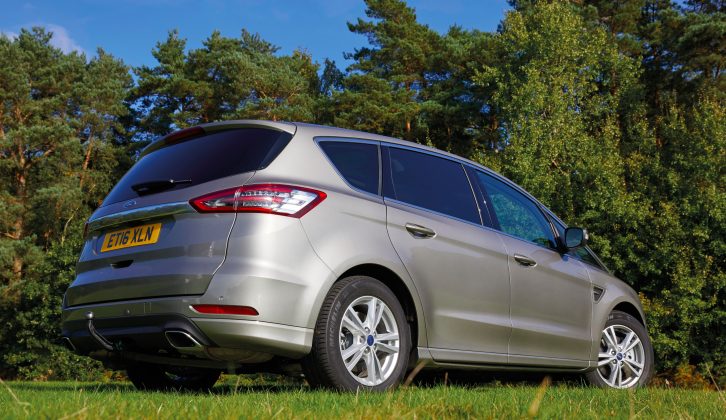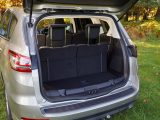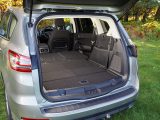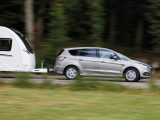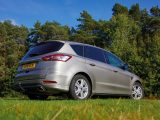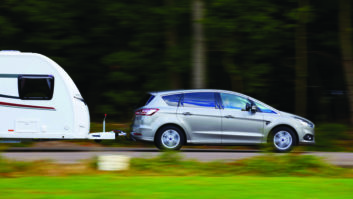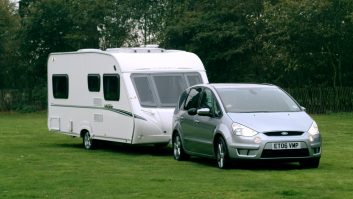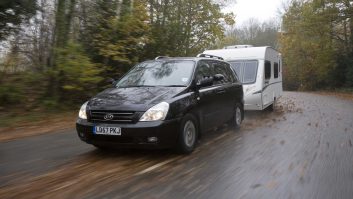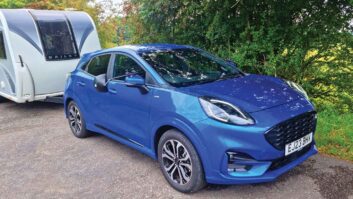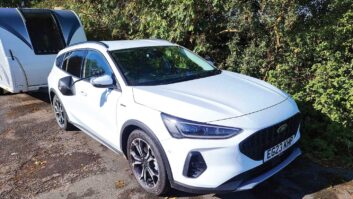Verdict
So, if you’re wondering what tow car to buy next, should you consider the Ford S-Max?
Well, if you plan to carry adults in all seven seats, then there are better MPVs available. But if the third row is going to be used once in a while or by young children, this is a very practical and capable tow car.
The Ford’s heft (it’s more than 200kg heavier than the equivalent Volkswagen Touran) makes it a reasonable match for a wide range of family caravans, especially for an experienced tow car driver who is happy to tow tourers that weigh between 85% and 100% of the S-Max’s kerbweight.
Being heavy wouldn’t count for much if the S-Max wasn’t up to the job of pulling a large caravan, but we’ve found that the Ford makes a stable and reassuring tow car.
At a steady 60mph, the S-Max feels unflappable. It also performs well in emergency manoeuvres.
As a solo drive, the Ford has the measure of its rivals. The steering might not be quite as sharp as before, but the S-Max is still more fun to drive than any other MPV we can think of.
Entertainment doesn’t come at the expense of comfort, either, with a cosseting ride and little wind or road noise.
The S-Max works best as a five-seater, with lots of space for passengers and luggage, and with the third row of seats stowed the boot is huge.
Although not cheap to buy, Titanium-spec cars are well equipped. What’s more, What Car?’s data suggests that the big Ford should hold its value well.
It all adds up to a thoroughly impressive all-rounder.
Pros
It has a usefully high kerbweight
It’s engaging as a solo drive
Boot space is great, when used as a five-seater
Residuals should be good
Cons
Titanium spec isn’t cheap
Space is tight in seats six and seven
An all-new Ford S-Max was launched in 2015, promising improved practicality, more on-board technology, greater comfort, and a range of strong and efficient engines.
The version we are testing here is one of the more powerful diesel models with 180PS (178bhp). Yet despite the engine’s power, the big Ford promises respectable fuel economy.
By MPV standards, the S-Max is a heavy car with a kerbweight of 1838kg. That’s good news if you are looking to match an MPV to a heavy family caravan. The legal towing limit is 2000kg.
So, let’s find out what tow car talent this generation Ford S-Max has. Can it justify its high price? And is it still the best MPV for keen drivers as well as being a capable tow car?
It all adds up to a thoroughly impressive all-rounder
Towing
At a time when most new cars are becoming ever lighter, it’s good to see an MPV that is heavy enough to make a sensible match for a wide range of tourers.
The 1838kg kerbweight gives an 85% match figure of 1562kg, well within the 2000kg legal towing limit. That’s a genuine towing limit, too – unlike some MPVs, the legal maximum doesn’t drop when the car is fully loaded.
We’ve been towing on the road and at the test track, pulling a Swift Conqueror 565 with a Mass in Running Order of 1500kg.
The Ford S-Max confidently pulled the Swift caravan up to speed. Although the engine can feel a little flat at very low revs – something that’s most noticeable when pulling away – there’s plenty of muscle once close to the engine’s peak torque, delivered at 2000rpm.
We found that the Ford would easily hold speed on steep climbs, so long as the revs never dropped too low.
It pays to be in the right gear on hilly roads, though, and even on motorway inclines, fifth gear sometimes felt more comfortable than sixth. That’s down to gearing chosen for economy at speed, rather than any inherent weakness under the bonnet.
If you need a burst of acceleration to nip past a tractor or a Sunday afternoon dawdler, the S-Max is happy to oblige as our 11.6-second 30-60mph time shows.
Should you need to stop in a hurry, the brakes are up to the job. The Ford stopped from 30mph in 10.5 metres on a dry track, with very little drama or shunting from the caravan.
In regular towing, though, we found that the brakes needed a firmer shove than expected to slow car and caravan down. It’s something we grew used to, although a little more bite from the middle pedal would have been welcome.
There were no foibles to become accustomed to in terms of the S-Max’s stability. From the first turn of the wheel, the Ford felt like a car that was going to take towing in its stride, and so it proved.
Breezy autumn weather provided a stern test of the car’s towing credentials, but despite the S-Max’s tall bodywork, the Ford rarely moved around in crosswinds. We found the S-Max a very relaxing tow car on motorways and A-roads.
The S-Max put in a secure and assured performance in our lane-change test, too. Its steering might not be quite as crisp and immediate as the previous model’s, but it’s still accurate.
This helped the driver place the Ford precisely, and there was plenty of grip, however aggressively we changed direction. Only on the very fastest runs could we feel the caravan starting to tug at the hitch, but this is unlikely to affect sensible drivers.
The hill-start test also posed few problems. On a 1-in-10 slope in the dry, the S-Max’s electronic parking brake kept the car and caravan still.
So long as we called up enough revs to stop the engine bogging down, the Ford pulled to the top of the slope without undue clutch slip.
However, there was a hot smell from the clutch after tackling the same gradient in reverse. It may have been a different story in the wet, so it’s worth noting that there are also 4×4 versions of the S-Max that use either this engine or the less powerful 150PS (148bhp) diesel.
For four-season touring we can see the benefit of the 4×4, but this front-wheel-drive car is a very capable tow car in its own right.
Everyday Driving
The original Ford S-Max was arguably the first people-carrier with something to offer keen drivers.
While many other seven-seaters are less stodgy to drive than MPVs of 10 or 15 years ago, the S-Max remains the pick of the class from the driver’s seat.
There has been a slight change of emphasis with the current car, though. The S-Max is still sharp to drive, with good body control and surprising agility for a car of this size, but those qualities are now combined with a very comfortable ride.
Ford’s engineers can congratulate themselves on a job well done, because the S-Max is secure and stable, but smooths over road imperfections at all speeds.
The Ford has a much more forgiving ride than the Seat Alhambra we tested a few months ago. The relatively small 17-inch wheels and tall tyres fitted to our car no doubt help, and we’d resist the temptation to choose larger alloys from the options list.
The S-Max is a quiet car as well as a comfortable one. The diesel engine sounds distant unless revved hard, and at motorway speeds it stays in the background.
There’s also little wind or road noise, which makes the S-Max an easygoing companion on long journeys.
You feel the benefit of the 2.0-litre diesel’s power and torque in regular driving as well as when towing – there’s ample performance even when the car is fully loaded.
Our only complaint is that the steering of the current S-Max isn’t quite as weighty and direct as the original’s, but it’s a small point.
Overall, the Ford is both rewarding to drive and comfortable to travel in.
Space
The driver and front-seat passenger have lots of room to get comfortable in the S-Max, and there’s a wide range of adjustment for the seat and steering wheel.
The large glass area gives an airy feel, although forward visibility could be better. The dashboard is solidly built, but doesn’t match the upmarket feel of the VW Touran’s.
Middle-row space is generous, with enough head- and legroom for adults, even if those in the front of the car are very tall.
There are air vents between the front seats and the cabin is wide enough to seat three abreast without too much rubbing of elbows. However, the S-Max doesn’t have the underfloor storage you’d find in a Citroën Grand C4 Picasso.
Both outer middle seats tip forward and slide to give easy access to the third row. But, there’s not much space back there. In fact, if the middle row is all the way back on its runners, legroom is very tight indeed.
If those in the middle compromise a bit then there’s enough room for children, but adults will still be short of legroom. For anyone looking to use seven seats regularly, the Ford Galaxy and Seat Alhambra have more space for those in seats six and seven.
With all the seats upright, there’s very little room for bags. However, with the third row folded (a push-button job if you opt for the £400 Titanium family pack) there’s a very long, deep and wide load space.
With the second row also folded there’s more luggage room than you’d find in any estate car.
It adds up to a very practical MPV, so long as you only use the third row of seats from time to time.
Running Costs
Compared with a range-topping Vauxhall Zafira Tourer, which costs more than £1000 less than the S-Max, the Ford looks pricey. However, haggling can reduce the S-Max’s price by £2000, according to What Car?.
Standard equipment includes satellite navigation, an eight-inch touchscreen, a digital radio, dual-zone climate control and 17-inch alloy wheels.
Safety kit includes all the airbags you’d expect as well as high-tech driver aids such as Lane Keeping Assist and headlights that automatically switch from main beam to dipped if traffic is coming the other way.
The official combined fuel consumption figure is 56.5mpg – not bad at all for a car of this size, weight and performance. And we achieved 26mpg while towing the Swift.
After three years and 36,000 miles on the road, What Car? predicts that the S-Max will be worth 44% of the original price. That’s a better return than the equivalent Citroën or Vauxhall.
Just make sure you get a good deal when you buy new.
Technical Specifications
| Engine Size | 1997 cc |
| Kerbweight | 1838 kg |
| 85% KW | 1562 kg |
| Towball Limit | 90 kg |
| Maximum Towing Limit | 2000 kg |
| Power | 178 bhp |
| Torque | 295 lb ft |
| Offical MPG | 56.5 mpg |
| CO₂ | 129 g/km |
